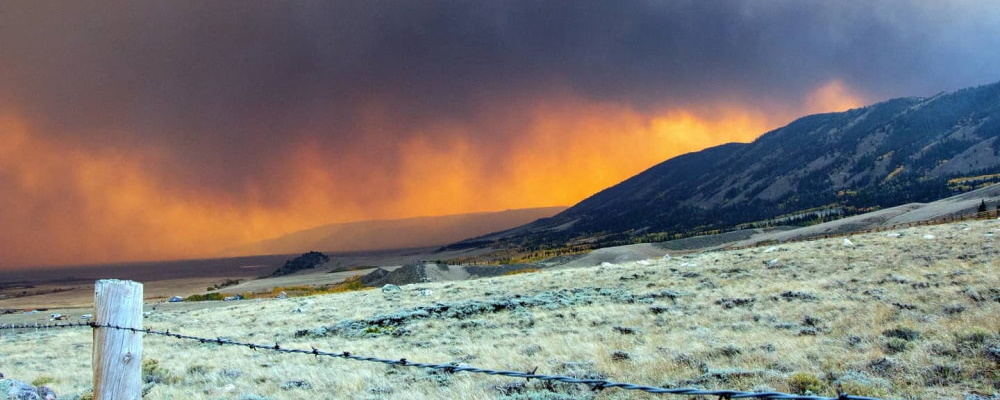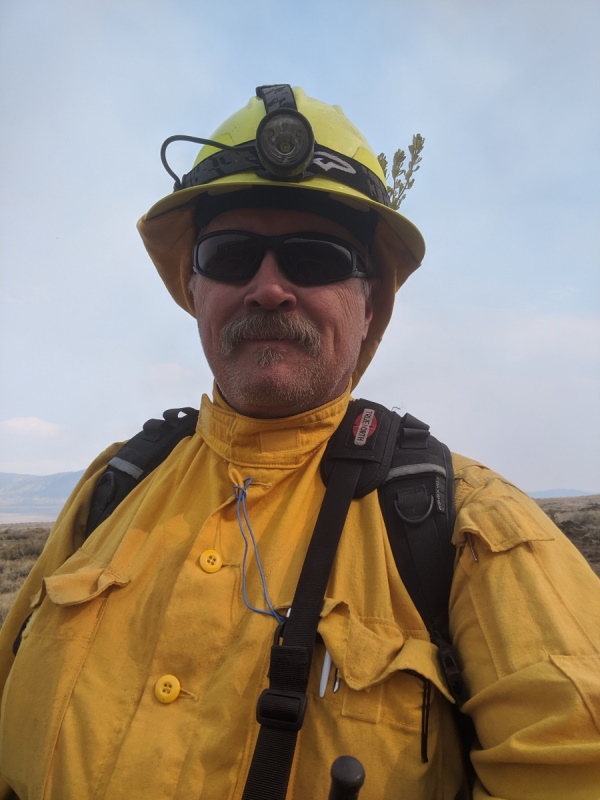“There’s a dragon with matches that’s loose on the town.
Takes a whole pail of water just to cool him down.” – Robert Hunter
Mullen Fire on October 4, 2020, in Centennial, WY
Photo by: Jennifer Kirk
By: Harry L. Whitlock II
Last September the normally clear air of Laramie Valley became grey and acrid when
the Mullen Fire blew up in the Medicine Bow National Forest west of Laramie. While
wildfires in the Western US now seem commonplace, their regularity doesn’t remove
the anxiety these fires cause people whether you live in the city or country. Our
sinuses, lungs, and eyes were irritated. We hunkered down inside our houses with windows
closed tight, wondering when the blue skies and clean air would return. But some of
us in the community were asked to help contain the fire. We headed westward to go
put the wet stuff on the red stuff.
A friend asked about my Mullen Fire experience. The short answer was I worked a lot
of hours digging fireline, laying and rolling hose, spraying water, assembling sprinklers,
and watching the fire burn. An elevator speech version limits the real story about
what a wildland firefighter experiences, though. Rather than a quick synopsis, I wanted
to tell my friend a good story, which I share here.
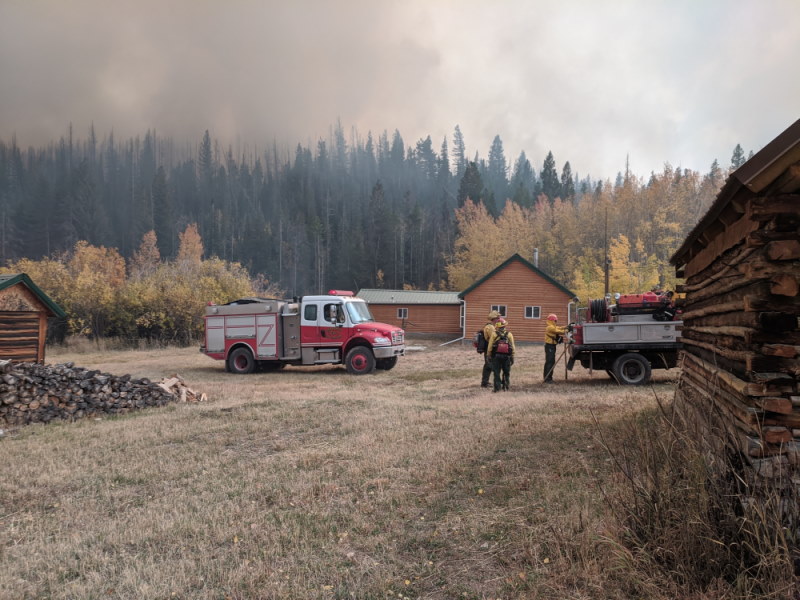
Mullen Fire - Vedauwoo and Big Laramie engine crews working together for structure
protection near Albany, WY
As with most things, there is not a simple answer about what wildland firefighters
do. There are so many jobs on a wildfire incident that to explain all the different
work being done would fill a book. I went out on Mullen as a “Fireline EMT” with an
engine crew. That means I used a shovel or Pulaski to dig line. I carried hose and
assembled sprinklers like everyone else on the fire engine. I also was prepared to
provide medical aid. Fortunately, the only emergency medicine I got to practice was
bandaging minor cuts and blisters. My tourniquets and Israeli bandages stayed packed
and unused. No one got stupid with a chainsaw or lost an argument with a falling tree.
Remember how the Mullen Fire quickly grew so fast? In one week after its discovery,
the fire had grown to over 69,000 acres. By the time it was declared “suppressed” about a month later, more than 176,000 acres of forest and wildland in Wyoming and Colorado were burned. It is ranked as one of
the largest fires in Wyoming history. Over 60 structures in the area were damaged
or destroyed.
There was a lot of perimeter to control to contain and suppress that fire. At one
point the fire became a Type-1 incident. This is the highest level of wildland incident.
Several hundred people from all over the US came to Albany County to get the beast
under control. These were seasonal and hotshot fireline crews, full-time wildland
firefighters, and fire engines. There were professional incident managers with FEMA
and the US Forest Service, as well as dozens of aircraft from around the US working
around the clock to suppress the fire. But there were also a lot of volunteer firefighters
from Albany County departments that responded to the incident.
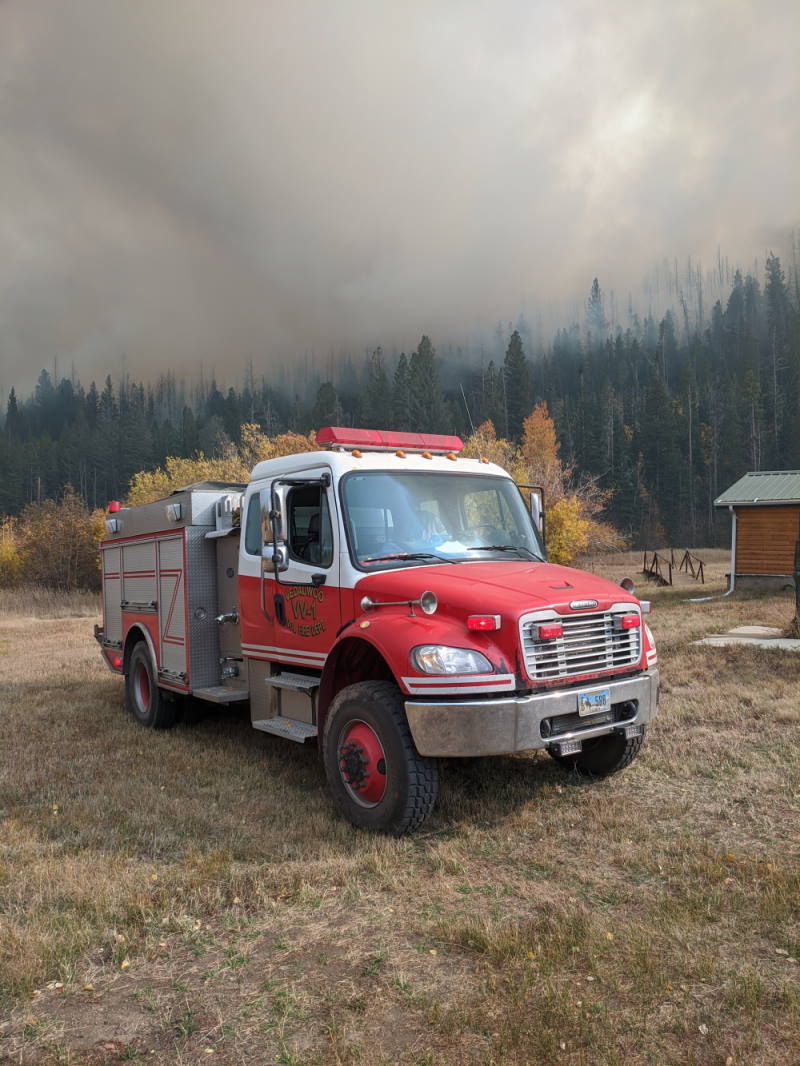
Vedauwoo Engine VV-1 at Mullen Fire near Albany
The local firefighters who responded to the Mullen Fire include several who work at
the University of Wyoming. As volunteers it is often difficult to get time off, especially
during the active semester, to go “eat smoke.” Fortunately, UW leadership across campus fully supported the deployment of UW employees who are members of Vedauwoo, Big Laramie
Valley, Centennial, and Central Volunteer Fire Departments in Albany County.
Local volunteer fire departments in Albany County provided some of the firefighters
during the early part of the Mullen Fire. However, as more resources poured in, the
local VFDs assumed a stand-by mission. “Surge” teams were created to respond within
a few hours if the fire blew up again, driven by high winds.
On October 6, the winds were gusting again. The “Surge 2” team was comprised of engines,
tenders, and crews from Vedauwoo, Big Laramie Valley, Central, Centennial, Tie Siding,
and Rock River. We met near Albany to get our assignments. We did not integrate with
the main incident camp up on Fox Creek Road, which was fortunate because cases of
COVID-19 were affecting people in the camp.
We were put up in cabins by the management of the “Table in the Wilderness” camp in
Centennial. Usually, at a fire camp, you sleep in a pop-up tent on the ground. Sleeping
on a bunk, even if only for a few hours before rolling out the door for the swing
shift briefing, was so very nice. The “Table” crew fed us breakfast as we headed to
the fire, but they also prepared an evening meal that was delivered to us on the line
by our team leader. Honestly, I had not eaten so well in a long time because of the
closure of restaurants in response to COVID-19. It was almost like eating al fresco
but with a lot more smoke.
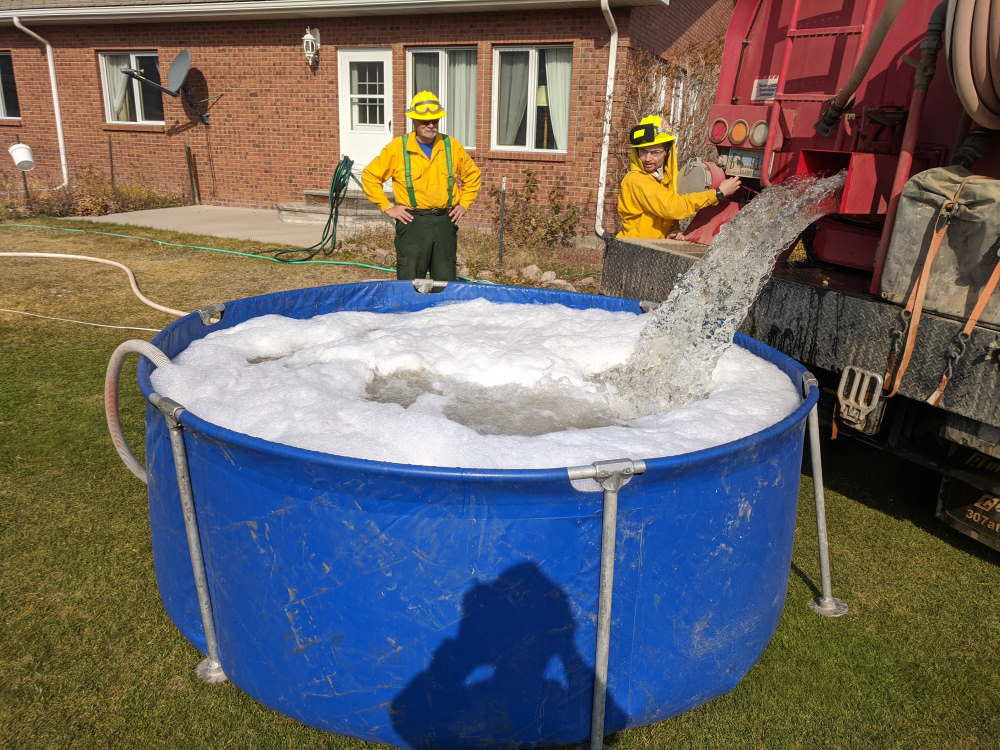
Mullen Fire tender filling drop tank
It was good that I worked strenuously and burned off those calories. As a swing shift,
we would work from 9ish to around 10 p.m., although there were a couple of nights
we were out until past midnight. The surge team’s main function was structure protection
and quick response fire suppression. Each engine was assigned a specific sector with
houses, barns, or other structures. Our mission was to set up sprinklers, watch for
and fight spot fires, lay hose in preparation for putting out fire, and above all,
be safe!
Vedauwoo VFD (VVFD) deployed a Type-3 engine and our 4,000-gallon tender. Three of
us were in the engine, which is a rugged off-road vehicle with a 500-gallon plus tank
and the ability to pump water and foam. We set up structure protection by installing
sprinklers and cutting back flammable material. We would respond to calls for suppressing
spot fires that would pop up when the day got hotter and the winds would carry embers
for miles.
The tender had two crew members from VVFD. They were assigned to continually haul
water from a site near Albany to the buildings where structure protection measures
were implemented. Portable 800 to 1,000 gallon tanks with a pump pushed water through
sprinklers to keep the vegetation wet. But those pumps were thirsty and it was a non-stop
mission of the tender crews to keep the tanks full.
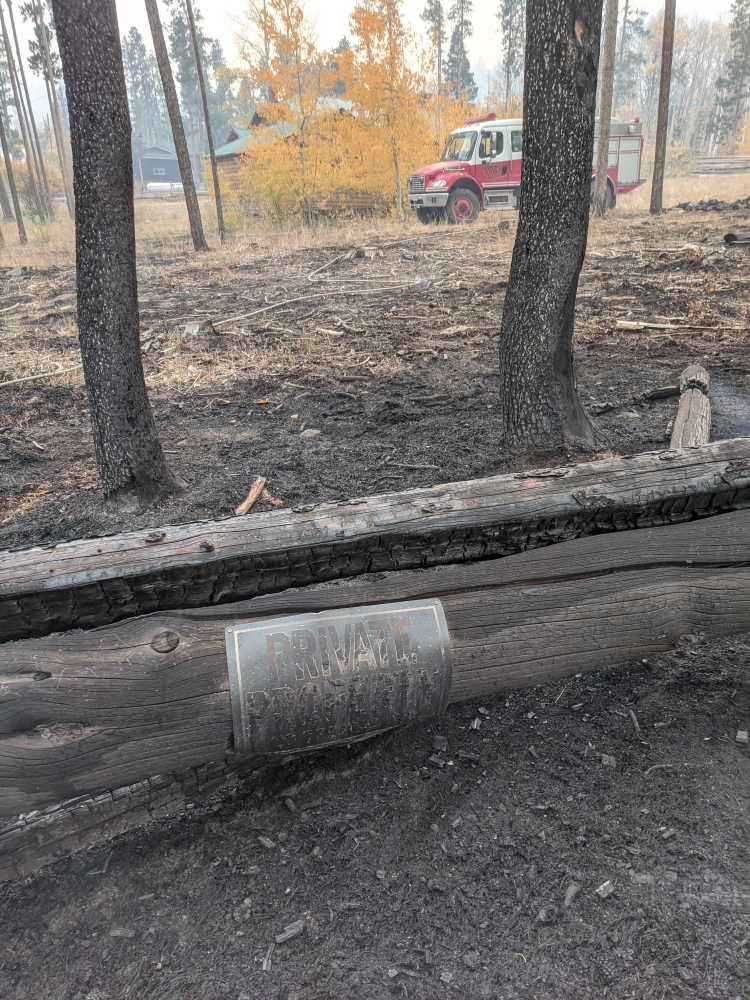
Mullen Fire - burned out area in Albany behind firehouse
Twice our engine was sent to a spot fire that started behind the fire station in Albany.
It’s kind of ironic to respond to a fire behind a fire station. We put in fireline
and quenched spot fires that popped up in that location. It would have been a stroke
of bad luck for a fire department to burn down but we chased bad karma out of town.
It is amazing how the fire seems to have a life of its own. An ember can stay alive
for miles drifting on a wind current. You would think it would burn out, but the ember
can be hot enough that when it lands it will ignite a new fire. Fire will also burrow
into the duff like an animal hibernating (“duff” is the decayed needles, bark, etc.
littering the forest floor). Duff in a lot of the Medicine Bow area is at least a
few inches deep and sometimes a couple of feet deep. This is because of the decades
of fire suppression. It builds up year after year, and you can’t rake the forest as
some have suggested. Once inside the duff, it smolders until the conditions are right
for a flame. It took lots of digging and water to put out those potential fires.
Another interesting episode occurred one balmy afternoon when a controlled back burn
got a little out of control. It blew up when the wind changed direction. The leaders
and crews were fully aware of that risk and positioned several other engines and a
road-grader near the burn-out area.
We watched the fire burn slowly towards us while parked near the house we were protecting.
Suddenly the wind shifted and the flame-front ran towards us. We and other crews quickly
put our engines in reverse and backed up about a hundred yards as the flames roared
through the pine and aspen towards the edge of the trees and the open sagebrush. It
was like an oven door had opened. The heat of the flame front ignited the grasses
and sage immediately at the edge of trees and threw embers hundreds of feet out into
the area. This immediately igniting more brush and grass fires.
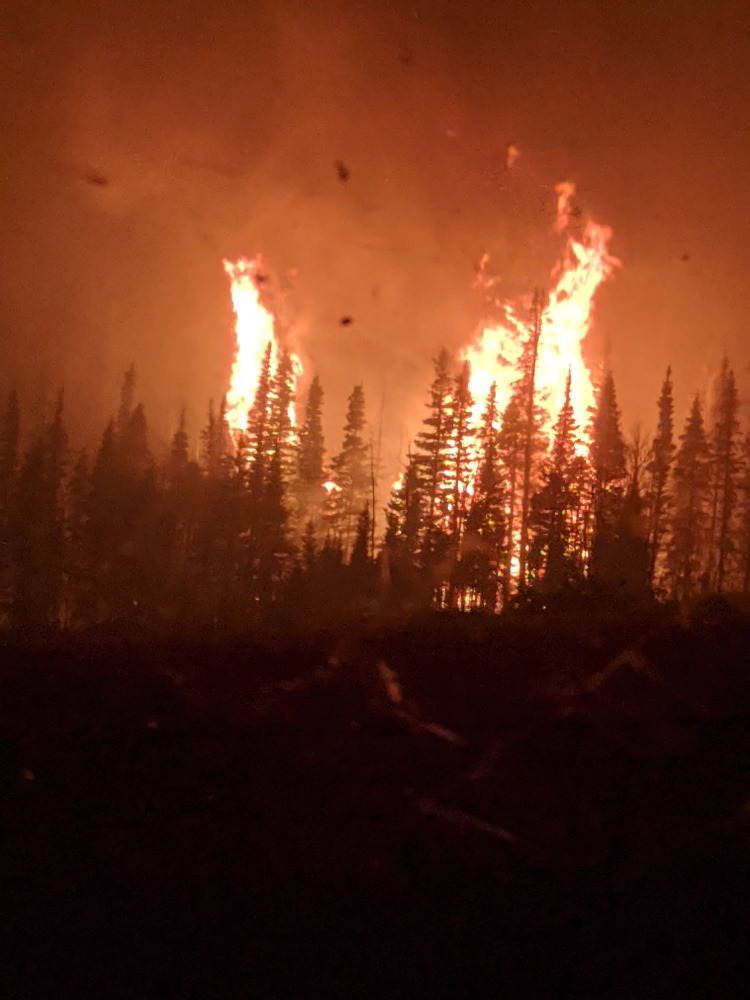
Mullen Fire - burn out blow-up
We put our apparatus in forward gear and rolled toward the fire along with other crews,
using our on-board water and tools to battle the fires. The road-grader operator drove
over the flames in the grass and sage, expertly using the dozer’s blade to plow over
the soil and snuff out the fire. That was something to see – a multi-ton machine operated
with finesse while flames several feet high danced alongside. Now there’s a heavy
equipment operator who is a lionheart!
We spent several more hours that evening putting out hot spots in that area and came
back the next day to put out a few more. Fortunately, the house we were assigned to
protect was not damaged at all because we had installed sprinklers all around the
property, fed from an 800-gallon portable water tank and pump.
Thankfully, the fire usually laid down at night as temperatures cooled and relative
humidity increased. Still, the fires continued to creep through the forest and had
to be watched. One night our engine crew worked past midnight in the Albany area helping
protect some very posh cabins (more like mansions but surrounded by combustible matchsticks).
My two crewmates and I spent several hours putting out a slowly creeping fire that
was supposed to be laying down and going to bed. Yet, like a naughty teenager, it
decided to stay up and play. We connected the pump on our engine into the pre-laid
hoses and sprayed water on the embers glowing orange in the dark.
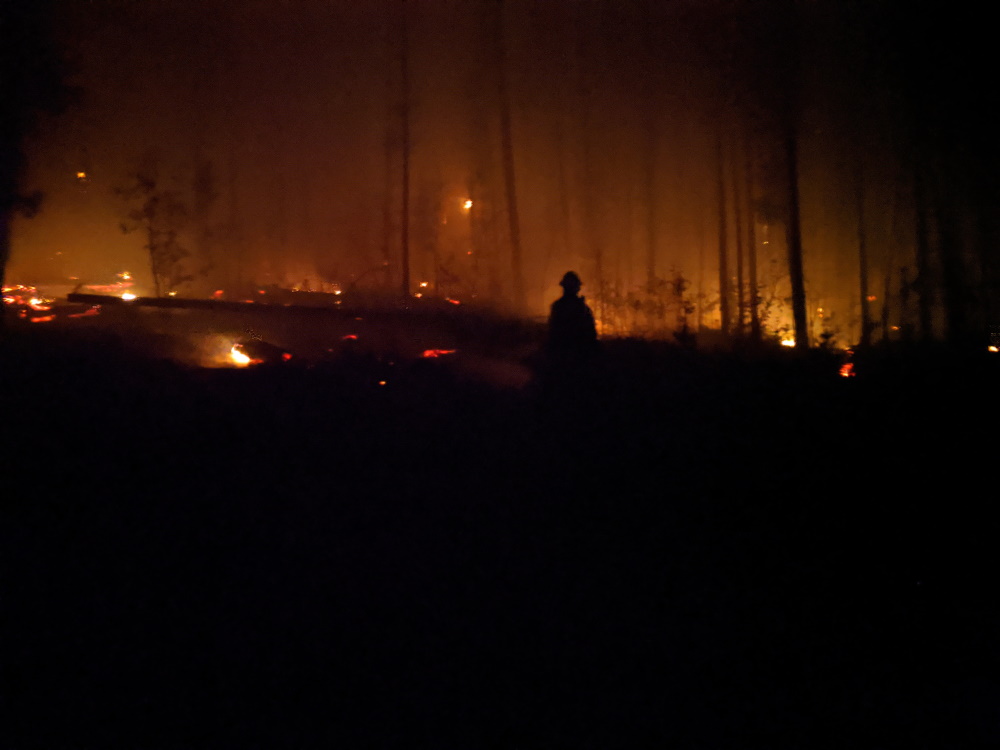
Mullen Fire - firefighting at night during structure protection
On October 11, Nature sent a storm our way. The moisture helped the crews to bring
the fire under more control. We had been told that morning the engine and tender would
be brought onto the incident. We were disappointed to be sent home right after starting
to check in at the main camp. The incident commander had started sending crews from
Mullen across the border to Colorado to fight other fires. Like it is in the military,
it pays to be adaptable in the wildland fire service. Semper Gumby – Always Flexible.
Becoming a wildland firefighter after having retired from the Army has been a balm
for my soul. I could not ask for a better group of people to hang out with late at
night, or on a hot day, digging fireline and spraying water. It forges a bond of true
community and service to others. Honestly, I think that the way back to a higher level
of civility within our nation is for people to be more involved in activities that
benefit the entire community instead of a small group. My advice? Quit looking at
the phone screen. Get up, get out, get out of the door. Do something! You don’t have
to put the wet stuff on the red stuff. Just find your niche where helping others makes
you feel better about yourself.
About Harry Whitlock:
Harry Whitlock is a Library Specialist in the Research & Instruction Department with
UW Libraries. He is a retired Army officer, Wyoming native, and volunteer firefighter
and EMT.
All photos provided by Harry Whitlock, unless otherwise noted.

